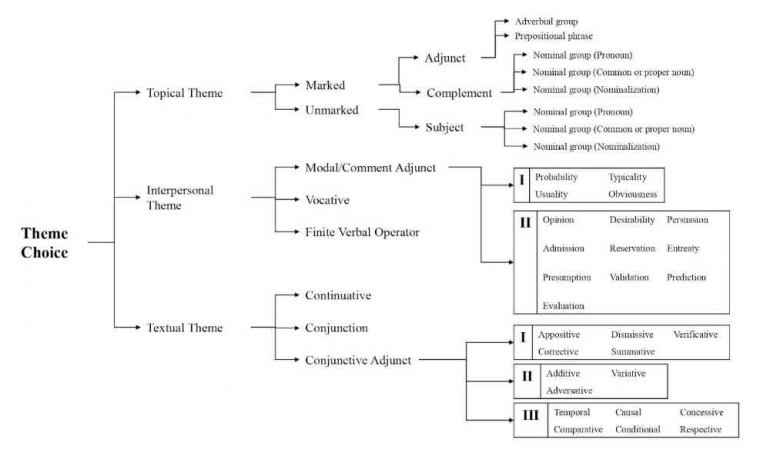In today's educational landscape, many students face significant challenges when it comes to writing effectively. Whether in academic essays, reports, or even creative pieces, students often struggle with organizing their ideas in a coherent and cohesive manner. This difficulty can lead to fragmented and unclear writing that hinders communication and diminishes the impact of their message. In academic writing, achieving a text's communicative purpose hinges on its ability to present ideas in a coherent and cohesive manner. Cohesion and coherence are fundamental to the structure of any text, ensuring that ideas are logically linked and contribute to the overall meaning (Halliday & Hasan, 1976; de Beaugrande & Dressler, 1981). While cohesion involves the grammatical and lexical ties that link parts of a text together, coherence is the result of the writer's cognitive processes in organizing these elements effectively. Both are essential in creating a unified text that communicates its message clearly. One effective approach to overcoming these challenges is the use of a theme system, particularly through thematic progression. This article, therefore aims to seek how thematic progression can help writers or students in this context to craft texts that are both structured and engaging.
Thematic progression aids in maintaining focus, facilitating smooth transitions between points, and structuring a unified argument or narrative, ultimately enhancing the overall clarity and effectiveness of the text. Thematic systems, as a concept from Systemic Functional Linguistics (SFL), offer a practical framework for achieving both cohesion and coherence. A theme system consists of the theme and rheme, which together organize a clause's information and guide the development of a text (Eggins, 2004; Halliday & Matthiessen, 2004). Thematic progression, which refers to the shifts and development of themes throughout a text, is crucial in ensuring a logical flow of ideas and enhancing the text's comprehensibility (Emilia, 2014). This becomes particularly important in genres such as explanation texts, which require clear organization and logical sequencing of ideas to describe phenomena and their causal relationships (Derewianka, 1996; Emilia, 2011). Indonesian EFL students, however, often struggle with producing cohesive and coherent explanation texts due to their limited experience and understanding of these aspects (Hadiani & Permata, 2019; Rizki et al., 2022). As such, analyzing texts using theme systems can help teachers identify students' strengths and weaknesses in writing and provide targeted support to improve their writing skills. Previous studies have shown that students who employ more effective thematic patterns tend to produce texts with higher levels of coherence and cohesion, highlighting the importance of theme systems in developing proficient academic writing (Emilia et al., 2018; Zahra et al., 2020).
The theme system is the realization of textual metafunction that builds the text environment. It is realized by the use of theme and rheme. Theme is a clausal element used to orient the readers about the 'given' information or what the clause is about (Eggins, 2004; Emilia, 2014; Fontaine, 2013; Halliday & Matthiessen, 2004). However, the notion of "given" is commented on by Dane (1974) by stating how information is perceived as "given" may be affected by: a) individual divergences in the context, the situation, and the common knowledge of the people involved in the text, b) the fact that the communicative property of "givenness" is a graded property, c) the length of the preceding text, d) synonymous expression in the preceding sentence, e) implied expressions in the preceding sentence. Thus, Dane further suggests there should be principles as a basis for how information that has been presented can be viewed as "new" information. What comes after a theme is rheme, which is a clausal element as the remainder of the message contains "new" information (Eggins, 2004; Halliday & Matthiessen, 2004, 2014).
Types of Theme
The theme is categorized based on its functions. Eggins (2004), Fontaine (2013), and Halliday and Matthiessen (2004, 2014) explain three types of theme as listed below.
- The experiential or topical theme
It is the constituent of a clause expressing the experiential meanings that are usually placed first. These experiential meanings are participants, processes, or circumstances. Different experiential meanings expressed in the topical theme lead to its categorization into the unmarked and marked topical theme. Unmarked or "the expected or default case" (Fontaine, 2013, p. 141) topical theme is the subject or the participants of the clause. Meanwhile, a topical theme positioned not as the subject and used to express either circumstance or process is called marked or "atypical" (Eggins, 2004, p. 318) topical theme.
- The textual theme
The textual theme is the constituent of a clause expressing textual meaning. It shows the relevancy between clauses by using various cohesive devices. Fontaine (2013) states these cohesive devices are conjunctions and continuities. Meanwhile, Eggins (2004) states they are continuity and conjunctive adjuncts. Even so, the theoretical framework of this study (Halliday & Matthiessen, 2004, 2014) classifies the cohesive devices of textual theme as conjunctions, continuatives, and conjunctive adjuncts.
- The interpersonal theme
After topical and textual themes, the theme system also has the interpersonal theme expressing interpersonal function. There are various views on how interpersonal themes are presented. According to Fontaine (2013), the interpersonal theme is expressed by various modal adjuncts, auxiliary verbs, interrogative pronouns, and vocatives. Meanwhile, Eggins (2004) states it is presented by two grammatical units, unfused finite and modal adjuncts (mood, vocative, polarity, and comment adjuncts). Another view is proposed by Halliday and Matthiessen (2004; 2014) which explains interpersonal themes are represented by modal or comment adjunct, vocative, and finite verbal operators.
To summarize, the categorization of theme choice can be seen in figure below:

All together, it can be seen that each type of theme represents every language function from SFL perspectives.
Thematic Progression
The use of theme and rheme creates various patterns called thematic progression or TP. It happened due to the unplanned nature of a discourse (Eggins, 2004). Dane (1974) argues thematic progression represents text connection, sequence of events, and hierarchy of clauses. This statement is supported by the implication of three main patterns of thematic progression as listed below.
- The zig-zag pattern or linear thematic progression or simple linear pattern
This pattern helps the text to attain cohesion by building new information (Eggins, 2004; Emilia, 2014; Dane, 1974). Dane (1974) argues the use of the simple linear pattern represents "the most elementary, basic TP (p. 118)."
- Theme reiteration or constant thematic progression pattern









